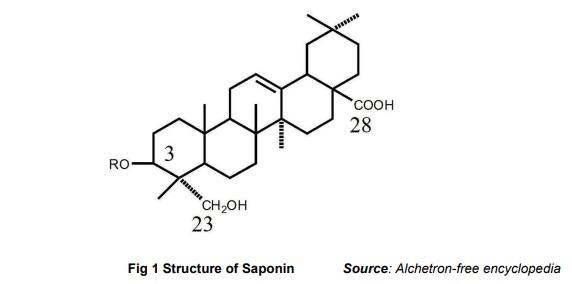Sustainable poultry production in India requires consistent quality and continuous supply of feed and feed additives. The implementation of laws to prohibit the use of growth promoters in animal diets enforces feed industries to use plant sources as feed additives in poultry diets. Research on phtyochemicals as natural feed additives should be supported so that India can be self-sufficient in feed additives for poultry industries.
Phytobiotics or phytogenic feed additives (PFAs) in poultry nutrition had shown many promising effects on overall production as well as the welfare of the birds. Feed constitutes a major production cost for these enterprises. The shortage of quality feed as well as rapid growth rate of the poultry industry had made poultry enterprises more challenging.
The phytogenic feed additives mainly comprise organic acids, essential oils, saponins and flavonoids, etc., and inorganic substances like antibiotics, growth promoters, etc. But there are increasing public concerns towards presence of chemical residues in poultry products and microbial resistance to antibiotics. Therefore, use of phytogenic feed additives against antibiotics as performance enhancers is becoming very popular practice nowadays. Thus, the present review made an attempt to compile information on one of the important PSMs, saponin in poultry production. Saponins are a diverse group of high molecular weight plant secondary metabolites (PSMs), containing either a tetracyclic steroidal or a pentacyclic triterpenoid aglycone and one or more sugar chains. The name is presumed from the Latin word sapo (soap) reflecting their widespread ability to form stable soap-like foams in aqueous solutions (Vincken et al., 2007).The permissible dietary level of phytosaponin from different plant sources influenced higher growth rate, better feed efficiency, as well as reduced the emission of ammonia gas from faeces results improving the health and welfare of poultry. Saponins increase the permeability of intestinal mucosal cells invitro, inhibit active mucosal transport and facilitate uptake of substances that are normally not absorbed. In optimum levels, it would increase nutrient absorption from the intestine by increasing villi diameter by 40-50A° thereby making those permeable to large molecules like ferritin; this fact may be responsible for better growth rate.
Chemistry of saponins
Sugar moieties (pentoses, hexoses or uronic acid) of saponin are glycosidically linked to a hydrophobic aglycone (sapogenin) which may be either triterpenoid or steroid In nature (Francis et al., 2002). Triperpenes are the most widely, naturally occurring saponins. The skeleton of triterpenoid and steroid saponins are oleanane and spirostane or furostane, respectively (Sparg et al., 2004; Siegler, 1998). The biological property of saponins varies according to the ring structure of aglycone moieties and number of sugars attached to it.
Phytosaponin as Antioxidant
Antioxidants are the compounds which inhibit the oxidation of other molecules. Oxidation is a chemical reaction that produces free radicals that damage the cells and manifest adverse biological effects. Saponin donates free electron to unstable compound to make them stable. The productive birds will be constantly under stress which makes them vulnerable towards infectious and metabolic diseases. The stress induces the production of free radicals and reactive oxygen species (ROS) at cellular level in poultry. Production of free radicals and ROS may lead to deterioration of immunity, increased susceptibility to infection, and inferior production performance.
Phytosaponin as Immunomodulator
Phytosaponin are capable of stimulating the immune system and thereby enhancing resistance to diseases. Phytosaponin can stimulate secretion of cytokines and trigger non specific immunity, as well as trigger humoral and cellular immune responses. It has been reported that antibody titre against Newcastle disease virus in broiler chicks on 7th and 14th day post-vaccination was significantly higher 1:16 to 1:64 in the phytosaponin-fed group.
Positive effect on egg production and egg quality
Phytosaponin supplementation up to 100 mg/kg in diet is effective in improving hen housed egg production, egg weight and shell thickness in white leg horn hens. Yucca extract supplementation (phytosaponin) to the layers influences the egg production, albumin and yolk index, shape index, Haugh unit and shell thickness but reduced egg’s specific gravity and number of cracked eggs
Positive effect on Semen quality and sex hormones in Breeder hens
Supplementation of phytosaponin resulted in an increased testis size in male broiler birds. An increase in seminiferous tubule diameter in cockerels receiving a diet containing 100 mg/kg saponin was reported by Hong et al., (1976). It altered reproductive functions in males and improved the quality of spermatozoa.
Driving performance on Fertility, Hatchability and Embryonic mortality
Fertility, hatchability and embryo mortality are the major parameters of reproductive performance of a breeding flock which depends 80% on farm factors viz nutrition. It had also reported that supplementation of soapnut shell powder saponin @ 75 ppm in diet to broiler breeders had significantly improved fertility, hatchability of total eggs set and hatchability of fertile eggs set as well as decreased total embryonic mortality.
Phytosaponin improves production, immunity, litter quality, gut health, meat quality and maintain welfare of poultry without affecting cost economics. Hence, it can be used as an alternative to antibiotics for production of clean and green meat which ultimately helps us to fight against antibiotic resistance in humans.
Phytosaponin as anti coccidial agent
In vitro experiment showed that the aqueous extract of S. rarak fruit pericarp (≥1 mg/ml) caused 90% of sporocysts become abnormal; hence, oocyst became inactive and cannot spread the disease of coccidiosis. Further in vivo experiment showed that the oocysts shed per gram faeces (OPG) of Eimeria sp infected chicken fed with S. rarak fruit pericarp were also reduced.
Phytosaponin as triglyceride and cholesterol reducing agent
Triglyceride and LDL cholesterol have become the major health concern related to human health, and most of the public avoid consuming food high in trans fat and cholesterol in their food including egg and meat. Phytochemicals has been reported to reduce cholesterol content in the meat or blood. The use of Phytosaponin, Lactone and terpenoids reduced triglyceride and cholesterol in chicken blood plasma in dose dependent manner (125-500 mg/100 g diet). Not only total cholesterol, the more harmful LDL-cholesterol in blood plasma was also reduced. These phytochemicals inhibited gene expression of two key enzymes of cholesterol biosynthesis, 3-Hydroxy-3-methylglutaryl CoA reductase (Hmgcr), acyl-CoA: Cholesterol O-acyltransferase 2 (Acat2) suggesting that saponin inhibited cholesterol biosynthesis.
Phytosaponin as antifungal agent
Humid condition is favorable for mycotoxin growth in the feed ingredients. High moisture in feed or environment makes feed ingredient more vulnerable for spoilage. Several mycotoxins such as aflatoxin, ochratoxin, T2 toxin, fumonisin, zearalenone cause negative effects on egg production. Feed acidifiers like organic acids and toxin binders were used to prevent the mould growth. Usage of feed acidifiers in the poultry diet attributes bad flavor in the egg and meat whereas minerals have affinity to bind with toxin binder which makes unavailable for absorption in the gut of poultry. Phytosaponin, Lactone and terpenoids isolated from Capsicum frutescens can inhibit the growth of germinated Aspergillus flavus, A. fumigatus, and A. niger. Phytochemicals increase H2O2 production and resulted in membrane lipid peroxidation, hence increase cell membrane permeability and cause leakage in the cell membrane, hence inhibit fungal growth
Phytosaponin as antibacterial agent
Not only it has antifungal property, phytochemicals also shows antibacterial activity. It may interact in some ways with bacterial cell wall and caused disruption of bacterial cell membrane. It was assumed the aglycone part of the saponin is the important factor for antibacterial property. Saponin in the 100% methanol fraction of guar meal was reported to be most effective against Staphylococcus aureus, Salmonella typhimurium and Escherichia coli bacteria.
Conclusion:
• Phytosaponins have antioxidant, antifungal, antibacterial, anticoccidial, immunomodulator, improve growth rate and FCR in commercial poultry, enhanced egg production, improves egg quality and improves male breeder performance.
• It also helps in reducing the triglyceride and cholesterol content in egg and meat.
• Phytosaponin improves the fertility, hatchability and reduce the embryonic mortality in poultry









